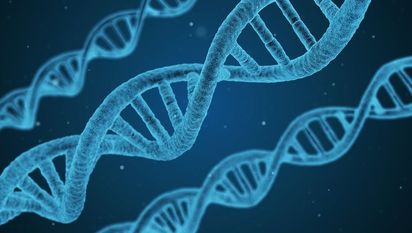|
CRISPR/Cas9 is an exciting new advance in biomedical science that allows for in utero and even in vivo editing of an individual’s genome. That means that, with this technology, we now have the capacity to alter either a human embryo’s or a living person’s DNA. The incredible power that CRISPR/Cas9 affords us has already started an ethical debate. Although there is the risk for this technology to be used for dubiously moral alterations—like boosting beauty or intelligence—there is also enormous potential to use CRISPR/Cas9 to cure rare genetic diseases that as-of-yet have few treatment options. In particular, three recent papers have demonstrated that CRISPR/Cas9 can be used in vivo to improve symptoms in a mouse model of Duchenne muscular dystrophy (DMD). DMD is an X-linked recessive disorder, so it is most commons in males (who only have one X chromosome). It is caused by genetic mutations that disrupt the production of dystrophin, a protein necessary for the maintenance of muscle fiber cells. It currently has no cure, and boys who have the disorder typically die by age 26. DMD is the perfect candidate for treatment via gene editing because it is caused by a single mutation. In theory, CRISPR/Cas9 should be able to reverse the course of the disease by correcting the aberrant mutation. Recently, three labs demonstrated sought to treat live mice that have a genetic mutation mirroring human DMD by administering a CRISPR/Cas9 variant designed to correct that mutation. Remarkably, they found that they could partially restore dystrophin production and improve muscle strength in the mice using this technique. How could the researchers edit the genome of live mice? They delivered CRISPR/Cas9 to the cells by injecting an adeno-associated virus (AAV) containing the CRISPR/Cas9 molecules into the mice. AAVs are viral particles that have been robbed of their ability to replicate. They allow delivery of their contents to cells without risk of causing harm to the tissue. In fact, they have already been used successfully in humans to treat diseases such as Parkinson’s. The combination of CRISPR/Cas9 gene editing and AAV delivery system is a powerful tool that will likely revolutionize our ability to treat genetic disorders in the coming years. Look out for clinical trials trying out this approach on a variety of genetic disorders in the future. Read more about the DMD scholarly articles in our medical research database:
|
AuthorsWe are grad students and scientists dedicated to disseminating Are you a student or postdoc? We need your help to deliver scientific facts to the public!
Categories |
|
|



